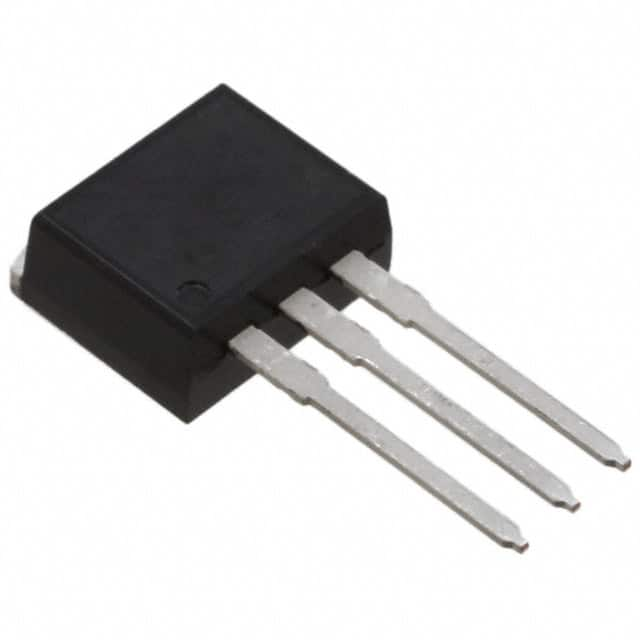Lihat spesifikasi untuk detail produk.

FQI19N20TU
Product Overview
- Category: Power MOSFET
- Use: Switching applications in power supplies, motor control, and other high current circuits
- Characteristics: High voltage capability, low on-resistance, fast switching speed
- Package: TO-220, TO-220FP
- Essence: Efficient power switching
- Packaging/Quantity: Available in reels or tubes, quantity varies by manufacturer
Specifications
- Voltage Rating: 200V
- Current Rating: 19A
- On-Resistance: 0.09Ω
- Gate Charge: 30nC
- Operating Temperature: -55°C to 175°C
Detailed Pin Configuration
- Pin 1: Gate
- Pin 2: Drain
- Pin 3: Source
Functional Features
- Fast switching speed for improved efficiency
- Low on-resistance minimizes power loss
- High voltage capability for versatile applications
Advantages
- Enhanced power efficiency
- Suitable for high current applications
- Wide operating temperature range
Disadvantages
- May require heat sinking in high-power applications
- Sensitive to static electricity
Working Principles
The FQI19N20TU operates based on the principles of field-effect transistors, utilizing the control of electric fields to modulate the conductivity of the device.
Detailed Application Field Plans
- Power supplies
- Motor control systems
- High current circuits
Detailed and Complete Alternative Models
- IRF540N
- STP16NF06L
- FQP19N20
This comprehensive entry provides an in-depth understanding of the FQI19N20TU, covering its specifications, features, advantages, and application fields, as well as alternative models for comparison.
Sebutkan 10 pertanyaan dan jawaban umum terkait penerapan FQI19N20TU dalam solusi teknis
What is FQI19N20TU?
- FQI19N20TU is a power MOSFET transistor designed for use in various technical solutions, particularly in power management and switching applications.
What are the key specifications of FQI19N20TU?
- The FQI19N20TU features a low on-resistance, high current capability, and fast switching speed, making it suitable for efficient power management and switching.
In what technical solutions can FQI19N20TU be used?
- FQI19N20TU can be utilized in applications such as motor control, power supplies, DC-DC converters, and electronic load switches.
What are the advantages of using FQI19N20TU in technical solutions?
- The advantages include high efficiency, low power dissipation, and reliable performance, making it ideal for demanding power management applications.
How does FQI19N20TU contribute to energy efficiency in technical solutions?
- FQI19N20TU's low on-resistance and fast switching characteristics help minimize power losses and improve overall energy efficiency in various applications.
Are there any specific considerations when designing with FQI19N20TU?
- Designers should consider proper heat dissipation, voltage and current ratings, and appropriate drive circuitry to maximize the performance of FQI19N20TU in their applications.
Can FQI19N20TU be used in automotive applications?
- Yes, FQI19N20TU is suitable for automotive systems such as electronic power steering, engine control, and battery management due to its robustness and reliability.
What are the thermal characteristics of FQI19N20TU?
- FQI19N20TU has low thermal resistance and is designed to operate within specified temperature ranges, ensuring stable performance under varying thermal conditions.
Does FQI19N20TU require any special protection circuitry?
- It is recommended to incorporate overcurrent and overvoltage protection circuitry to safeguard FQI19N20TU and the overall system from potential faults or transients.
Where can I find detailed application notes for integrating FQI19N20TU into technical solutions?
- Application notes and technical resources for FQI19N20TU can be found on the manufacturer's website or through authorized distributors, providing comprehensive guidance for successful integration.

